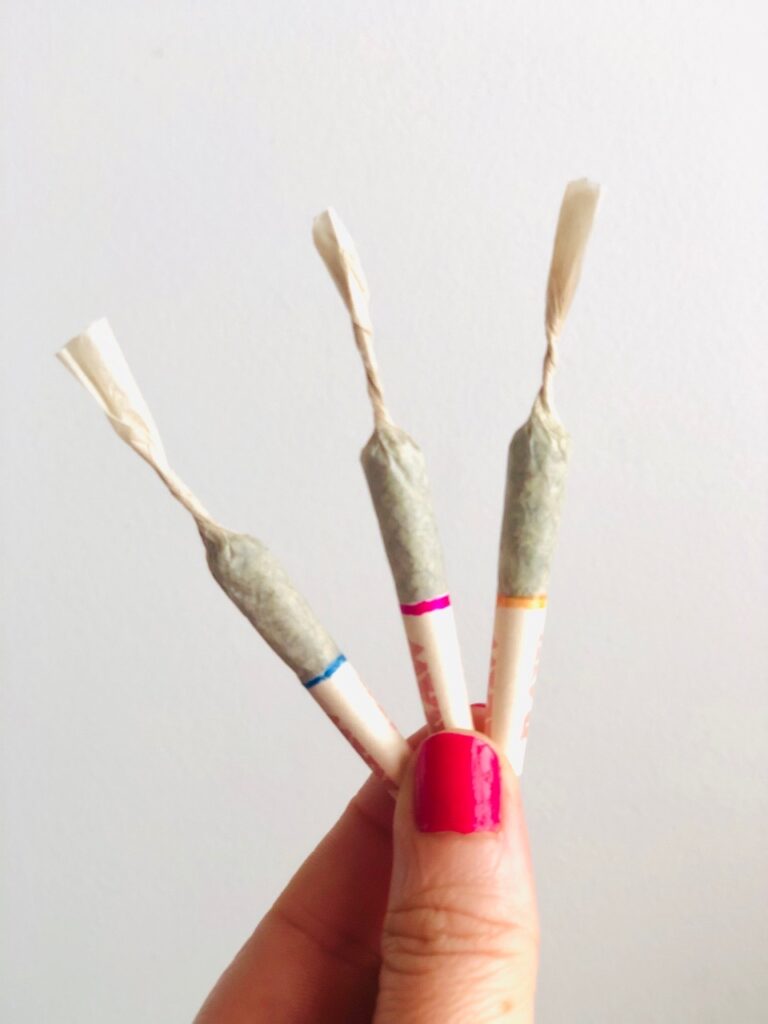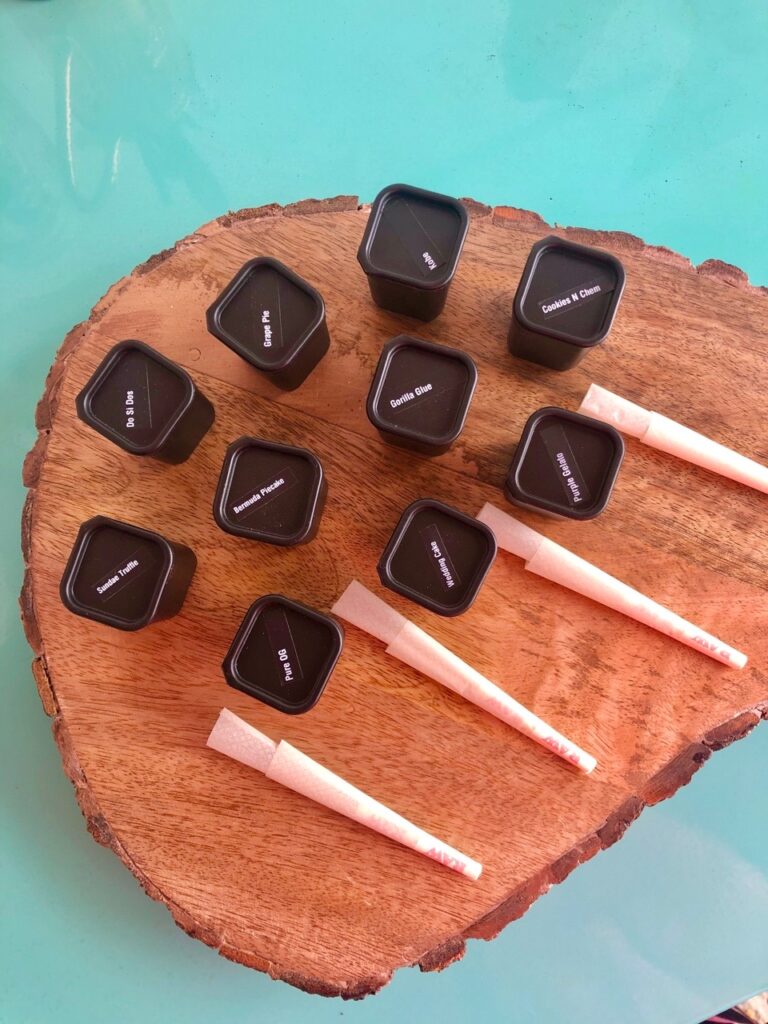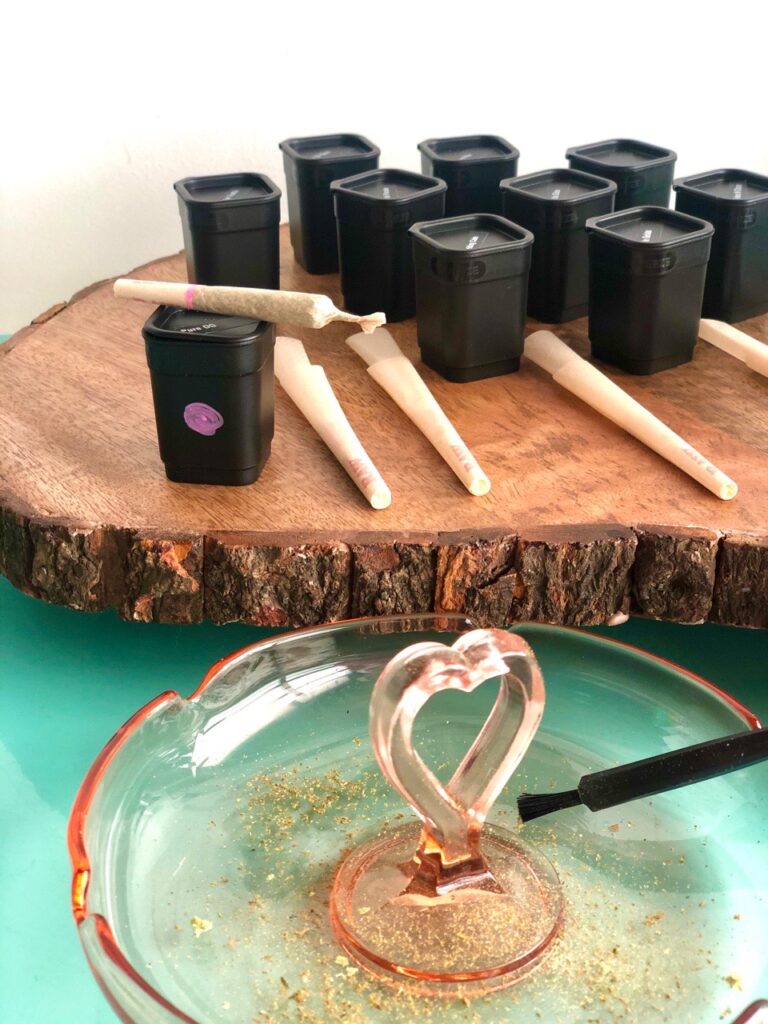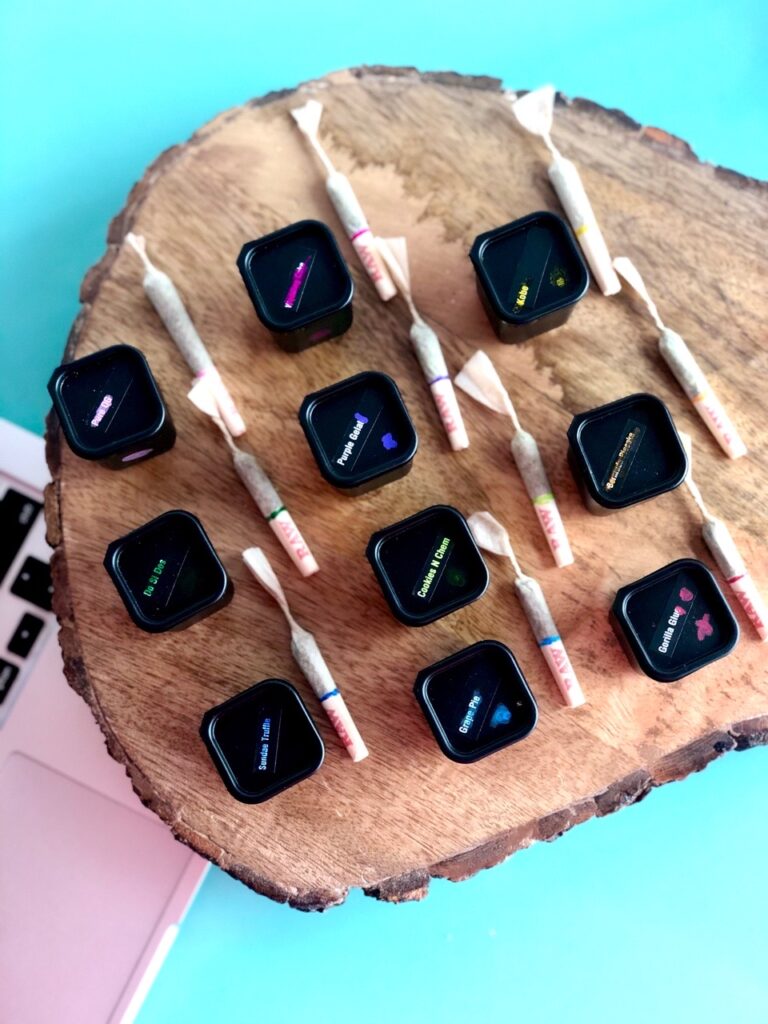
If you’ve already read part one of my how to taste cannabis series, you’re ready to rock with part two! Now that we know the basics of tasting cannabis, I wanted to share how this can be done in a large comparative tasting format.
I recently had the opportunity to taste through some of the new releases from PFFN, whose bulk indoor cannabis is designed for easy every day smoking for regular users (aka people like me!). I had ten one-gram varieties, each individually packaged and labeled in plastic containers, and while in part one of this series, I encourage readers to put their flower in glass for the purposes of tasting, here in quarantine, I didn’t have enough glass containers, and the plastic sufficed.

With ten varieties to taste through, I had the opportunity to evaluate flavors not only individually, but against each other, in what is called a comparative tasting. In the world of wine, comparative tastings are designed to help understand the way things like barrel ageing, blends, vintages, and terroir can affect a wine’s unique flavor expressions. In cannabis, I find these types of tastings are particularly helpful in teasing out the distinctive flavor notes that distinguish one varietal from the next. Doing so with a terpene analysis in hand is especially helpful in training your palate to pick those individual terpenes out as well, so I made sure to have the PFFN COAs on hand.
First, I did step one in my three-step tasting method, which is to nose the containers and evaluate the aromas in each strain. For this step, simply inhale deeply and evaluate the scents you perceive. It’s helpful to take notes and record your tastings along the way. To help you understand how to write tasting notes for cannabis, I’ll share how I develop two: Purple Gelato and Grape Pie. First, the nose:
Purple Gelato: Wild lavandar nose
Grape Pie: Bright, juicy and sweet fruit jumps out on the nose

For step two, which is the terpene pull, I wanted to taste the flower in joints, so I rolled them each into an adorable little “firecracker” mini-joint. I’d estimate they were about a half-gram each, but I didn’t weigh anything out. Because I have a cannabis allergy (a lot more to come on that later), I used the Otto by Banana Bros, a nifty joint-filling machine, to roll my joints. I failed at charging the Otto enough in advance so it took forever, but it was lots of fun. Whether you’re using an Otto or classic grinder, make sure to clean the device between each strain, in order to keep the flavors pure in your joints.
Because I had so many to taste and I didn’t want anything to get mixed up, I color-coded each joint, and marked the containers with the corresponding color. Be sure to keep the color only on the crutch or filter so you’re not burning and inhaling the ink, and jot down the color on your tasting notes in order to keep everything nicely organized.

Now, it’s time for the dry pulls. Although I do love the part where you get to smoke the cannabis, this is my favorite step in the process, because it really fine-tunes the flavors in each strain, and takes it from an aromatic expression, directly onto the palate. I’ve gotten to this step more than once and been literally awakened by the flavor in a specific strain, and it’s such an amazing way to analyze the expression of flavors in the plant. Here’s how the tasting notes evolve to include the notes in the “middle,” or the terpene pull:
Purple Gelato: Wild lavender nose gives way to warm blueberries and acidic lemon pith
Grape Pie: Bright, juicy and sweet fruit jumps out on the nose. Ripe stonefruit and purple flowers waft across the palate
Lastly, the third step: Light, inhale and enjoy. This brings the full flavor of the smoked cannabis onto the palate, and rounds out the overall flavor expression. You’ll finish your tasting notes by examining the flavors that hit the palate, the weight and mouthfeel of the smoke, and flavors on the lingering finish.
Purple Gelato: Wild lavender nose gives way to warm blueberries and acidic lemon pith. Aromatic and floral with a peppery finish.
Grape Pie: Bright, juicy and sweet ripe fruit jumps out on the nose. Ripe stonefruit and purple flowers waft across the palate, giving way to a slight peppery finish.
Most importantly of all, taste, taste, taste! It’s the adage the use in learning wine, and it’s no different in learning about the flavors in cannabis. The more you taste, and the more you pay attention to what you’re tasting, the more developed your palate will be.
If you want to see this process in action, check out the video below!